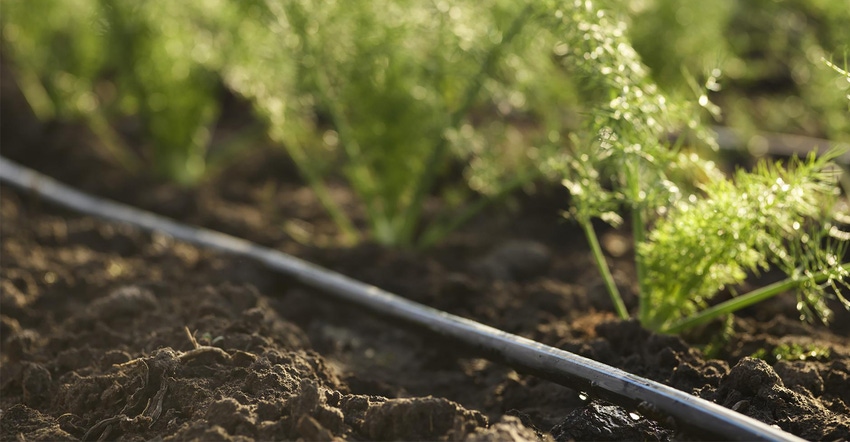
The Irrigation Association recently announced Toro's Aqua-Traxx Sweet Spot drip tape as the official winner of the 2020 New Product Contest in the Agriculture Specialty category.
The Irrigation Association's New Product Contest is usually held during the annual Irrigation Show. However, this year the IA hosted the contest online due to the COVID-19 pandemic. Over 30 new products and technologies were considered in this year’s contest, and judged on innovation, design quality, sustainability, ease of use and product life expectancy.
Toro's Sweet Spot drip tape is a ⁶⁄₈ inch interior diameter (ID) drip tape that splits the difference between standard ⁵⁄₈ inch and ⁷/₈ inch ID tape.
Sky Anderson, Sweet Spot product manager, notes every irrigator's situation is different – and there's not one silver bullet that will work for everybody.
“Sometimes the runs you get with ⁵⁄₈ inch drip tape end up a little short, and the grower needs to pay for additional infrastructure or labor to make up for the shorter runs,” Anderson says. “Or, sometimes growers might upgrade to ⁷/₈ inch drip tape, but in some cases, we've found upgrading to ⁷/₈ inch tape may oversize their system. The result would be unnecessary costs from a higher product purchase price [because you're paying for more tape plastic per acre] and higher water and energy costs.”
“That's what led us to ⁶⁄₈ inch tape, as we found several benefits. Compared to 5/8, you get longer runs or better uniformity with ⁶⁄₈,” he adds. “Compared to ⁷/₈ tape, it's less expensive — fewer pounds of plastic per acre and less water lost to runoff. It's also more economical and environmentally friendly when you have to dispose of your tape.”
Anderson explains that the ⁷/₈ inch tape has a 40% larger circumference (40% more distance around) than the ⁵⁄₈ inch tape, so growers are paying for 40% more plastic. With ⁶⁄₈, the grower is only paying for 20% more plastic, Anderson says. With the additional circumference, Anderson says ⁷/₈ inch ID tape has a 96% larger area than a ⁵⁄₈ inch tape – which means a ⁷/₈ inch tape requires 96% more water to pressurize the tape. Meanwhile, the ⁶⁄₈ inch tape’s area is just 44% larger than ⁵⁄₈ inch tape.
“Water costs money. And with ⁷/₈, you lose more water to runoff or flushing than you would with ⁶⁄₈ tape. The energy cost is also higher to pump all that water,” he says.
However, Anderson adds there are some additional cost savings benefits, especially when comparing ⁶⁄₈ inch tape with ⁵⁄₈ inch tape.
“Sometimes growers choose not to upgrade to a larger ID because they don’t want to pay for the additional plastic. In these cases, growers [who] run the supply line down the middle of the field install fittings on both sides of the supply line and run their drip tape both down and up the field to make up for the shorter tape runs. That's a little inefficient and more costly because you are installing twice as many fittings and paying for extra labor. Maybe worse than that, you've just eliminated space in the middle of your field where you could have crops.”
“If you switched to a ⁶⁄₈ inch tape application, you may be able to move your supply line to the top of the field and take advantage of ⁶⁄₈ inch tape’s longer runs,” he adds. “That means you have half the fitting costs, less labor costs to install the fittings, and you also are utilizing the entire field for your crops. So, there are a lot of hidden cost saving opportunities. Six-eighth inch tape doesn’t just provide longer runs and better uniformity, but it also means less fittings, less labor and more real estate for your crops.”
Overall, Sweet Spot was designed to fill the gap between the ⁵⁄₈ and ⁷/₈ inch ID tape.
“That's why we call it 'Sweet Spot.' There is a market for it and some growers will be able to take advantage of a ⁶⁄₈ inch tape,” Anderson says. “By no means is this a silver bullet. Every grower is going to use the product that works best for them, but this is another tool in growers’ toolbox to help them maximize their efficiency, yield and uniformity.”
About the Author(s)
You May Also Like






